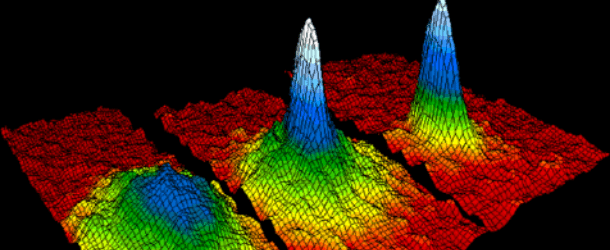Research on Particles Between Macro and Quantum World Might Have Application-Oriented Perspectives

(ScienceDaily) Understanding how particles behave at the twilight zone between the macro and the quantum world gives us access to fascinating phenomena, interesting from both the fundamental and application-oriented physics perspectives.
Recently, researchers at the Center for Theoretical Physics of Complex Systems (PCS), within the Institute for Basic Science (IBS, South Korea), in collaboration with the Rzhanov Institute of Semiconductor Physics (Russia) have reported on a novel electron scattering phenomenon in 2D materials.
They modelled a gas of excitons (electron-positron pairs). At low temperatures, quantum mechanics can force a large number of bosonic particles to form a Bose-Einstein condensate (BEC). Beyond the conventional phonons and impurities, the team described an unconventional electron scattering mechanism in BEC-2DEG hybrid systems: the interactions of an electron with one or two Bogoliubov quanta (or bogolons) — excitations of the BEC with small momenta. Although phonons and bogolons share some common features, the team found that they have important differences.
This research might be useful for the design of novel high-temperature superconductors. An apparent paradox links conductivity and superconductivity: bad conductors are usually good superconductors. In the case of electron-phonon interactions, some materials that show poor conductivity, because of strong scattering of electrons by phonons, can become good superconductors at very low temperatures. For the same reason, noble metals, such as gold, are good conductors, but bad superconductors. If this holds true also for electron-bogolon interactions, then the researchers hypothesise that designing a bad conductor, with high resistivity caused by electron-2 bogolons interactions, might lead to “good” superconductors.



















